2025 Renault Kiger Facelift Review: India’s Budget-Friendly SUV Grows Up Without Losing Its Magic
2025 Renault Kiger facelift has arrived with more aggressive styling, safer interiors, and comforts such as ventilated seats, 360° camera, and turbo-petrol power. Priced from 6.29 lakh, here’s the detailed review including history, performance, safety, features, pros, cons, and final verdict.
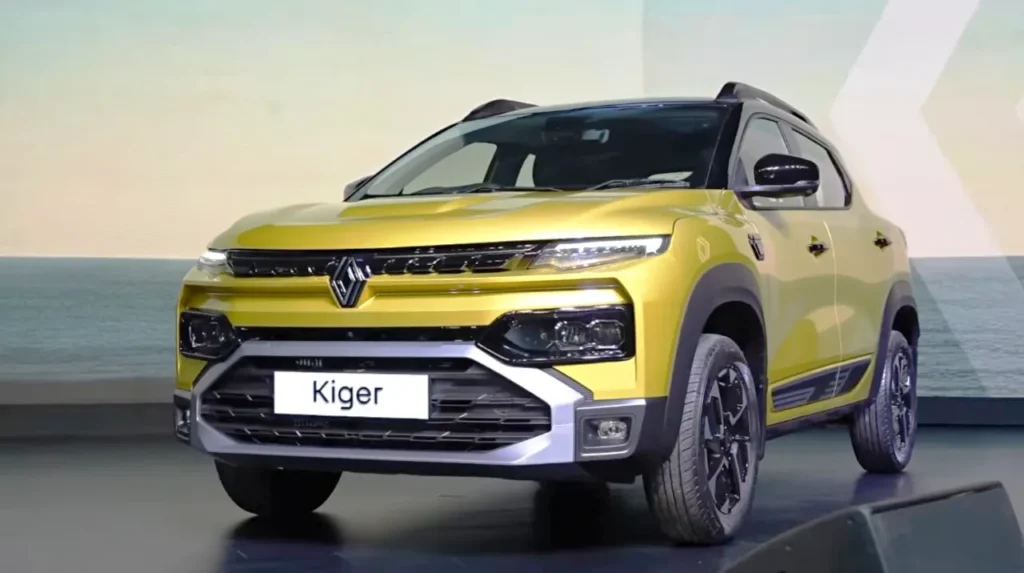
The Evolution of a Compact Star
India’s market for small SUVs is unforgiving. Each year, another contender comes along with more sparkling LED lights, larger touchscreens, and a few additional airbags. In 2021, when Renault launched the Kiger, it did not try to be the most glamorous one in the group. Rather, it arrived with a message: “Style, practicality, and affordability — all in one package.”
And guess what? Consumers adored it. The Kiger was an instant hit among young professionals and small families. It appeared SUV-ish without appearing too much, came with just enough technology to be modern, and most importantly, was priced so smartly that competition had to double-check their calculators.
Jump to 2025, the competition is more intense. Tata Punch, Hyundai Venue, Kia Sonet, and MarutiBrezza have set the bar higher. Renault had two choices: either play it safe and allow the Kiger to slowly diminish in the background, or make it sharper for the battle. Fortunately, Renault opted for the latter.
The end result is the 2025 Renault Kiger Facelift — a vehicle that not only has been upgraded, but one that feels more mature, more confident, and better in sync with Indian consumers’ requirements.
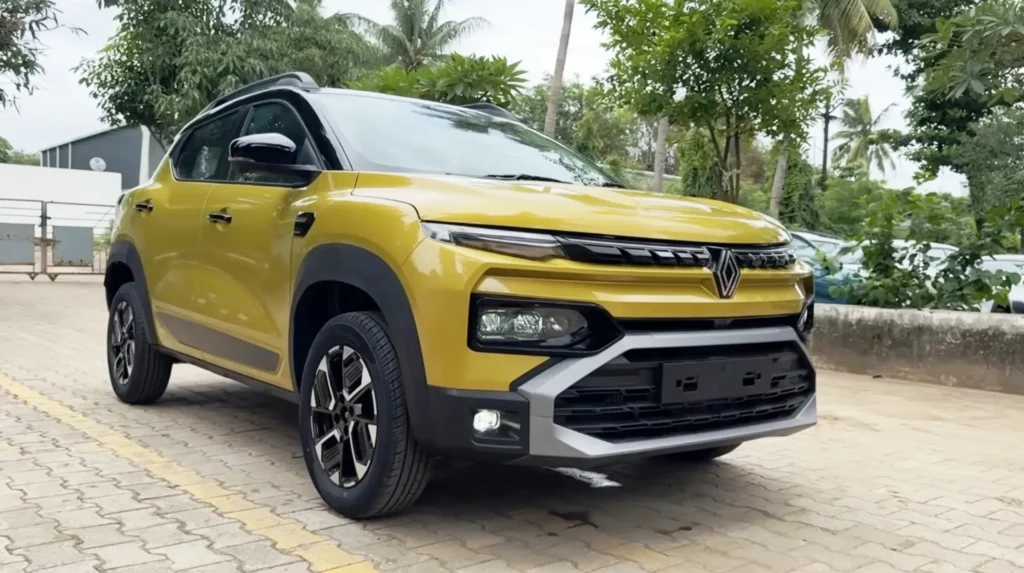
First Impressions – A Sharper, More Confident Look
The facelift is understated but evident. The new front bumper seems muscular, the grille sports Renault’s new logo, and the LED DRLs with projector headlamps finally endow it with that “premium” feel customers desire. Rearward, new bumpers and slimmer LED tail lamps make it look less budget-friendly and more fashionable.
The new 16-inch dual-tone alloy wheels are a nice touch as well. Not flashy enough, not boring enough — just the right amount of flair to make the eyes catch on city roads.
This is still obviously a Kiger, but it’s as if the SUV attended a year of design school in Paris and returned with more finesse.
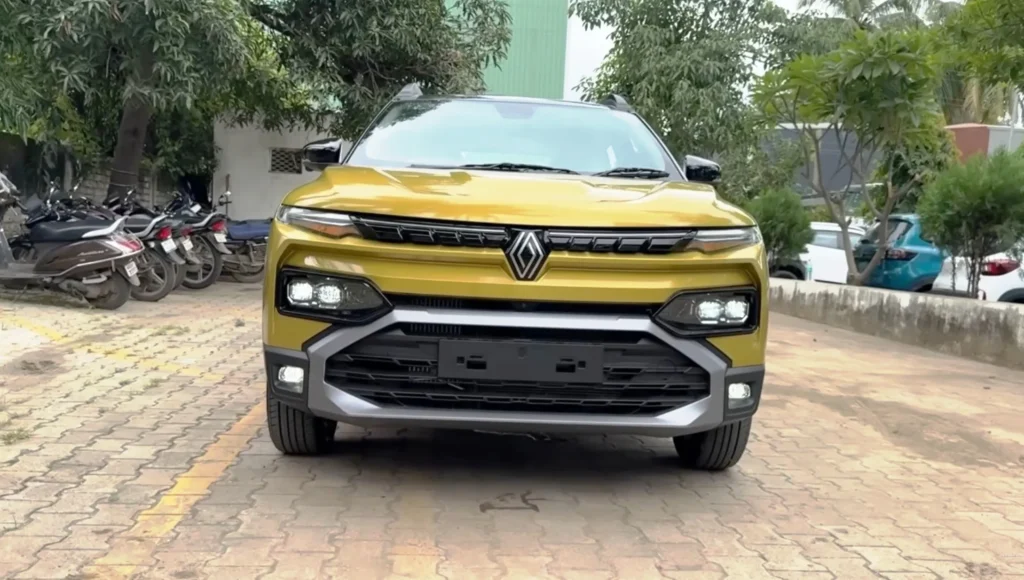
Inside the Cabin – More Premium, More Practical
Open the door, and you immediately sense Renault has gone to some trouble to make the cabin less “entry-level” and more “aspirational.”
The twin-tone dashboard now features soft-touch inserts. They are not German luxury standards but they raise the atmosphere.
Front ventilated seats are a blessing for Delhi summers in 45°C. Once you experience them in 45°C Delhi heat, you’ll never know how you managed without them.
The new seats are firmer and more comfortable, suggesting Renault addressed long-term durability as well.
Noise insulation is improved, so motor and road noise don’t intrude as much.
On the technology side, the 8-inch touchscreen infotainment remains impressive with wireless Android Auto and Apple CarPlay. Throw in a 360-degree camera, auto headlamps, rain-sensing wipers, and a wireless charger, and this suddenly feels like a compact SUV that overachieves on its price point.
The small touches matter too: a cooled glove box, multiple storage areas, and practical ergonomics. Renault hasn’t gone overboard with gimmicks — everything here feels designed for actual use, not brochure drama.
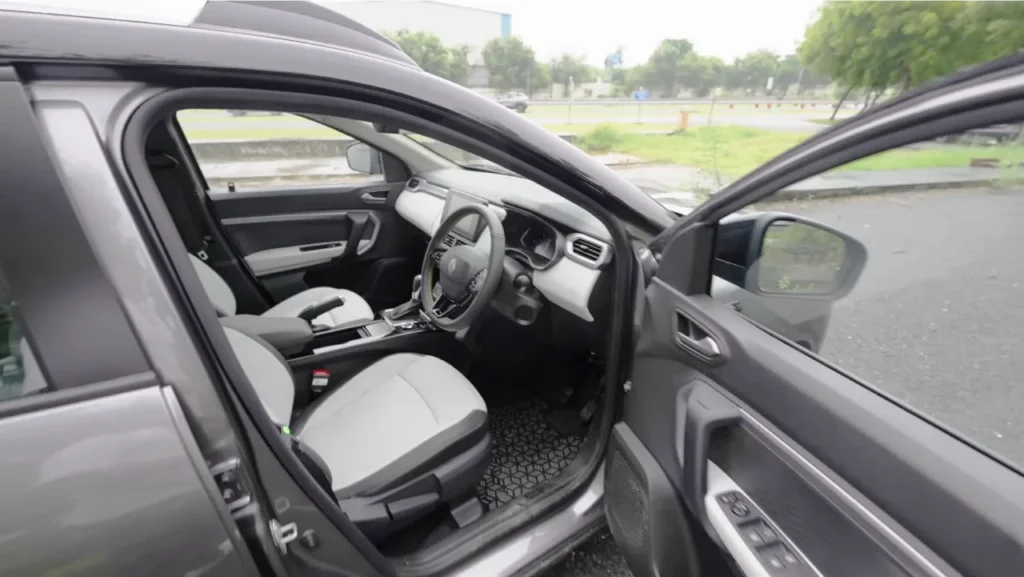
On the Road – Performance That Matches Urban Life
Performance-wise, Renault plays smart. Instead of reinventing the wheel, it sticks to tried-and-tested engines but adds flexibility.
The 1.0L naturally aspirated petrol makes 72 PS is practical and punchy. Perfect for city commutes, fuel efficiency, and wallet-friendly running costs. Pair it with the AMT, and you’ve got a stress-free urban commuter.
The 1.0L turbo-petrol (100 PS) remains the choice for enthusiasts. With the CVT gearbox, it feels smooth, responsive, and surprisingly refined. It’s no rocket, but it makes the Kiger feel lively and confident at overtaking speeds.
The good news? Both engines are E20 fuel-compatible, which means they’re future-proofed for India’s ethanol-petrol blend introduction. And Renault provides a CNG retrofit facility for some manual trims — a shrewd strategy in a market where fuel economy is as desirable as bhp.

Safety – From Budget to Bravery
If there was one aspect where customers had demanded more of the Kiger, it was safety. Renault has taken heed.
The 2025 facelift comes equipped with six airbags as standard on all variants. This is a massive statement on a price-sensitive segment. Include:
Electronic Stability Program (ESP)
Hill Start Assist (HSA)
Traction Control (TCS)
Tyre Pressure Monitoring System (TPMS)
ISOFIX child-seat mounts
And a considerate “Belongings Take Away” alert that reminds you not to forget your valuables (a feature created keeping Indian forgetfulness in mind).For families, this makes the Kiger a much more comforting option.
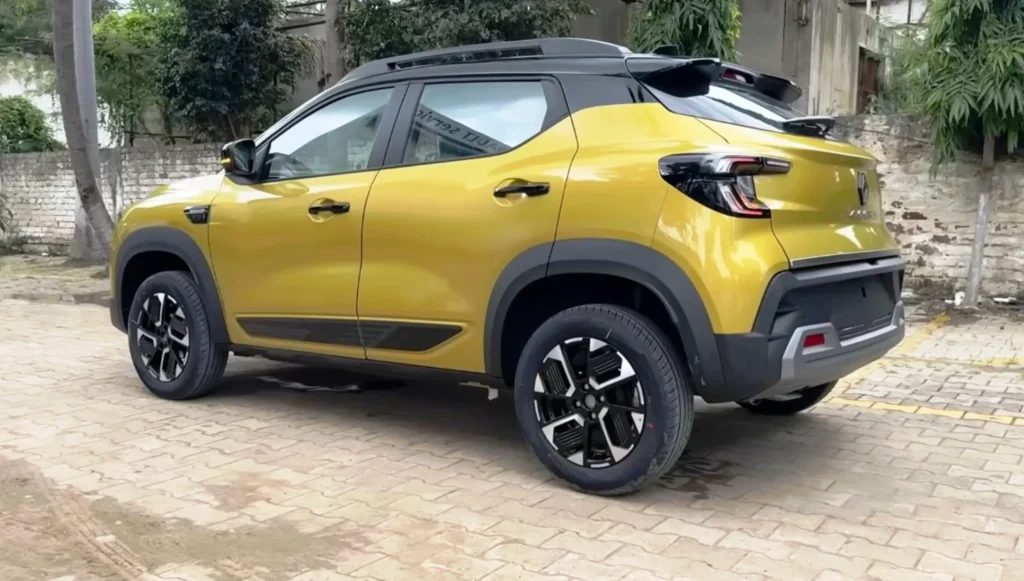
Day-to-Day Capabilities – The Urban Warrior
The Kiger was designed to be an “urban SUV” from the very beginning, and that is still its biggest strength.
With 205 mm ground clearance, it doesn’t bat an eyelid at potholes, speed breakers, or monsoon floods.
The 405-litre boot ensures you can pack weekend bags without puzzle game.
18–20 km/l claimed fuel economy means you won’t spend your weekends at a fuel pump.
Small size + light steering allow it to be a treat on busy city roads, but stable for long highway drives.
Not a hard-off-road vehicle, but one of the most pragmatic compact SUVs for India’s Monday-to-Saturday grind.
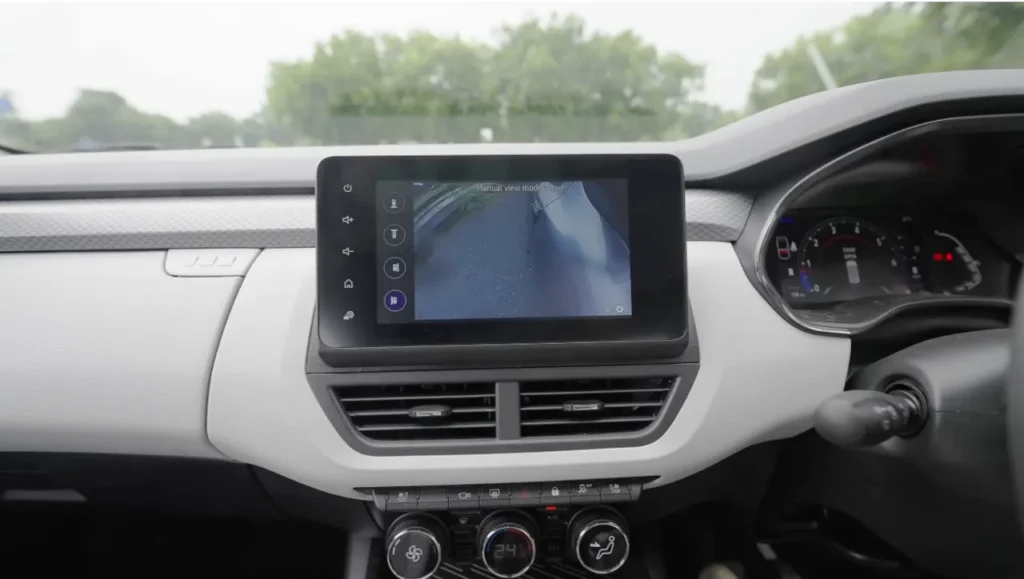
Pricing and Availability – The Value Game Continues
Renault has always cut its competition with the price of the Kiger, and the facelift keeps up with this.
Price Range: 6.29 lakh – 11.29 lakh (ex-showroom, India)
Launch Date: August 24, 2025
Trims: Authentic, Evolution, Techno, Emotion
The outdated RXE-RXZ nomenclature is a relic of the past now, replaced with trims that sound more lifestyle-driven. It’s marketing, sure, but it works — customers relate more with “Techno” than with “RXT(O).”
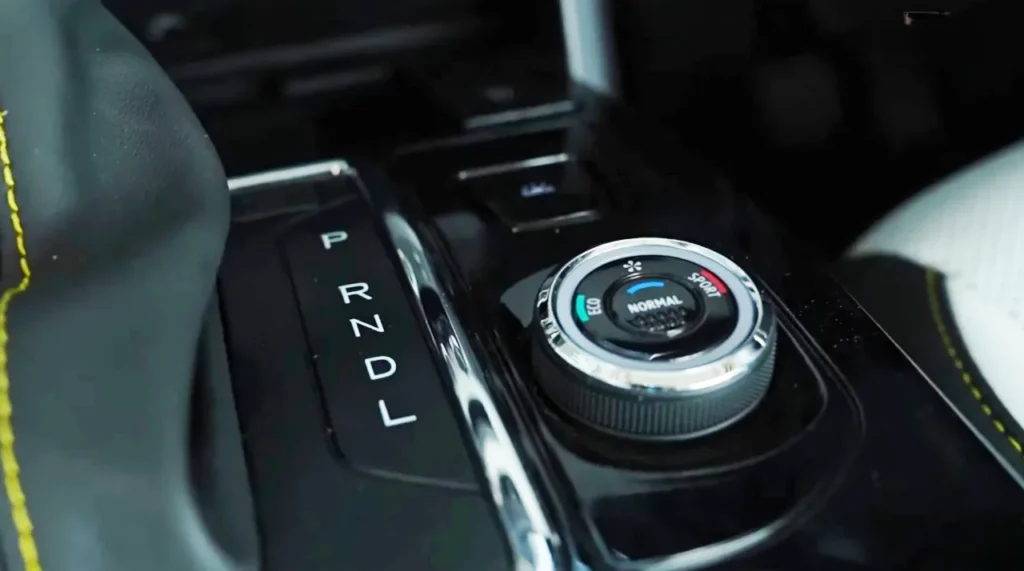
Pros and Cons – The Honest Take
What Works:
Eye-catching design update
Packed with useful features (ventilated seats, 360° cam)
Six airbags as standard — big gain
Turbo-petrol with CVT is urban-friendly and silky smooth
Price is still among the segment’s best
What Doesn’t:
Naturally aspirated petrol engine can feel a bit underpowered on highway runs
No diesel variant (customers still request it)
Cabin does get better, but is not as comfortable as Venue/Sonet
Rear seat somewhat cramped for three adults on long highway runs
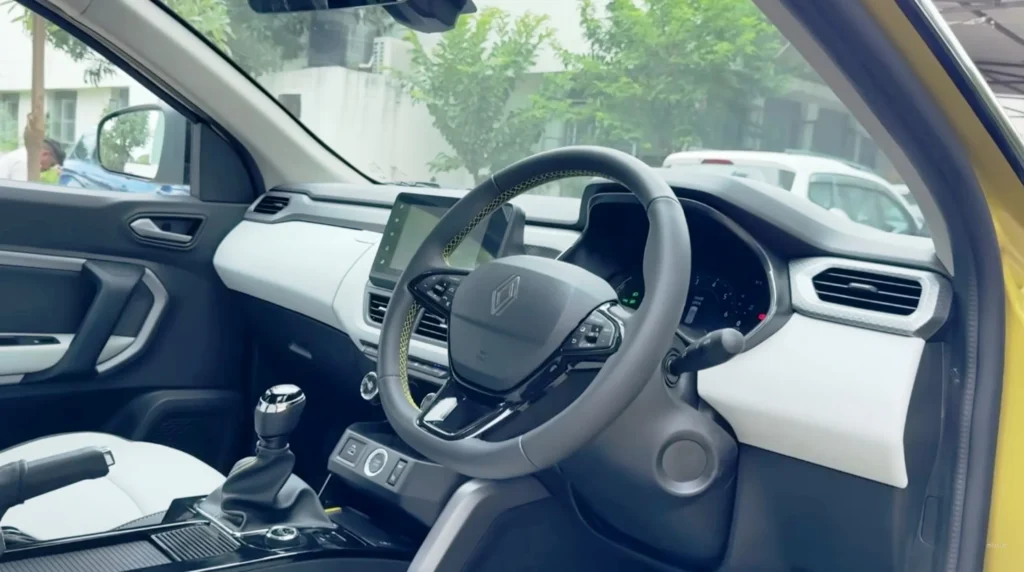
The Last Word – Would You Buy the 2025 Renault Kiger?
The Renault Kiger was never about being cheap. But value does not equate to being cheap — value is offering more than you pay for. With the facelift, Renault has transformed the Kiger into a grown-up compact SUV without being priced out of its affordability.
It’s safer, more upscale inside, more featured, and still is still aggressively priced. No, it doesn’t possess the total sheen of a Korean SUV, but it does 90% of the experience for 70% of the cost.
So, if you’re a first-time SUV buyer, a small family looking for practicality, or even someone who just wants an affordable turbo-petrol with style, the 2025 Renault Kiger facelift is one of the smartest choices under 12 lakh in India.
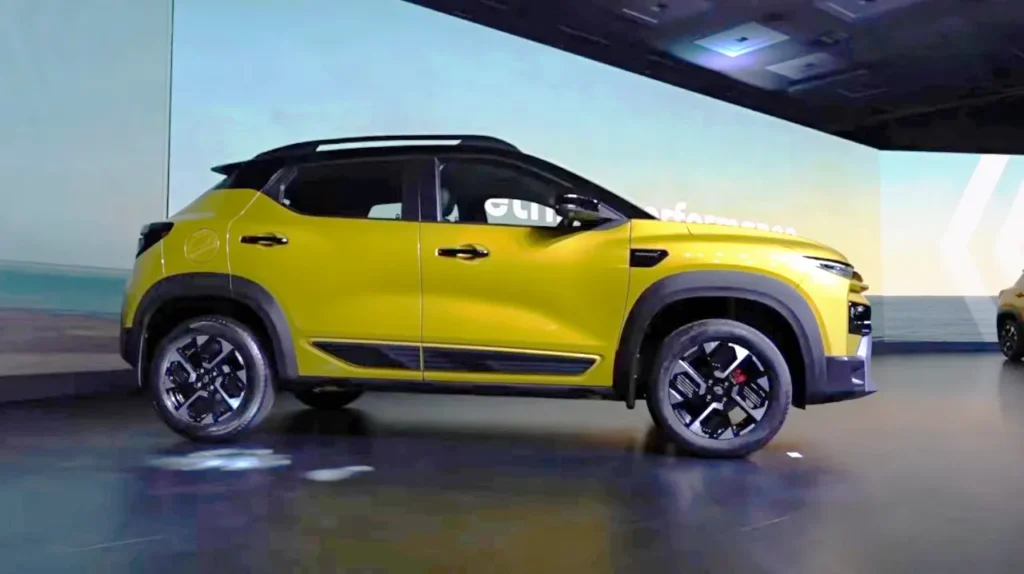
FAQs –
Q1: What is the price of the 2025 Renault Kiger in India?
The facelifted Renault Kiger is priced between ₹6.29 lakh and ₹11.29 lakh (ex-showroom).
Q2: Is the Renault Kiger 2025 equipped with six airbags?
Yes, six airbags come as standard across all versions, along with ESP, HSA, and TPMS.
Q3: What are the engine options in the 2025 Kiger?
You have a 1.0L NA petrol (72 PS) and a 1.0L turbo-petrol (100 PS), with manual, AMT, and CVT options. A CNG kit is offered with certain trims.
Q4: Is the Renault Kiger facelift suitable for Indian roads?
At 205 mm of ground clearance and 405 litres of boot capacity, it takes potholes, speed breakers, and highway drives with ease.
Q5: On which date was the 2025 Renault Kiger launched?
It was launched in India on August 24, 2025, with bookings available online and offline.


